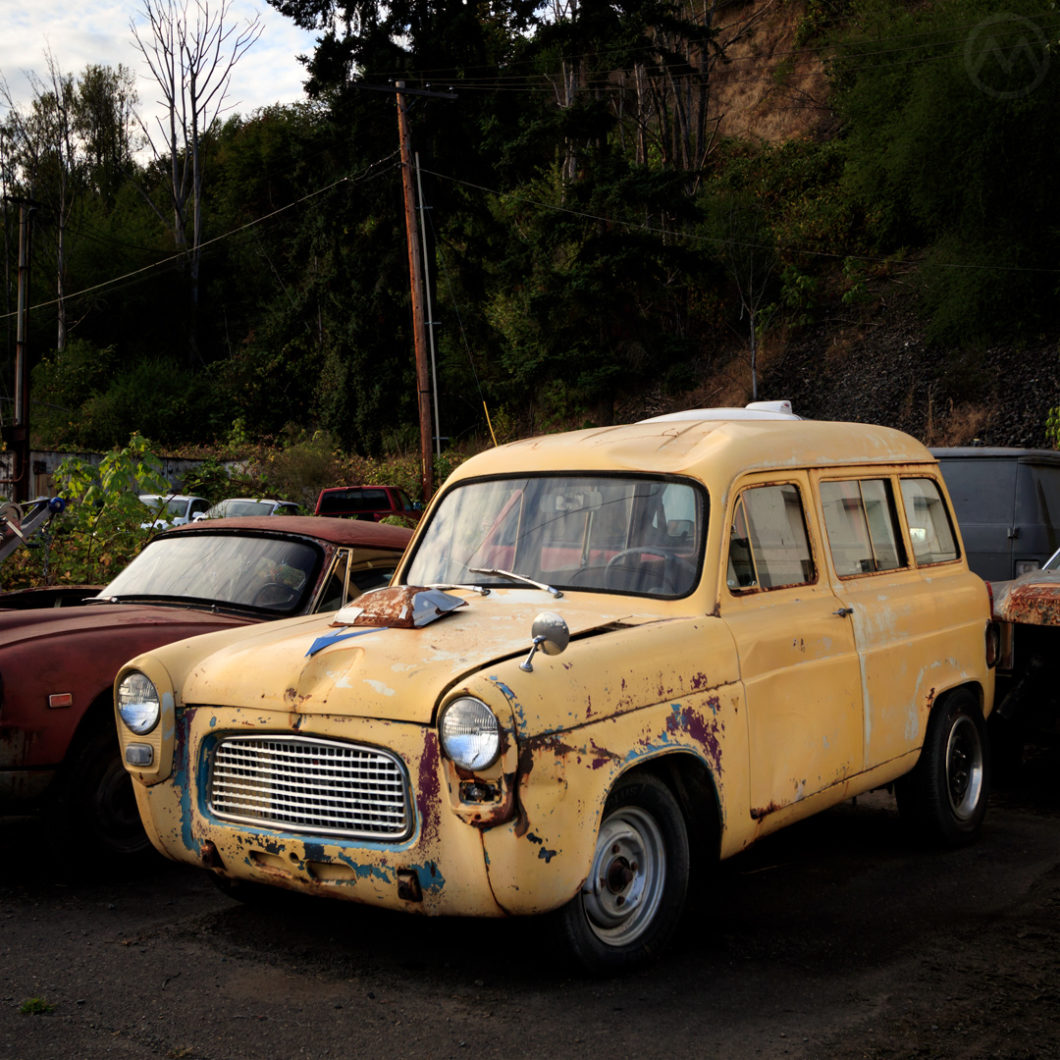The Escort name would later be famous as the 1960s European Mk1 and the 1980s North American front-driver, but this little wagon was the original Ford Escort, way back in 1955.
Ford of England had already offered commercial versions of the Anglia/Popular, and in 1954 the Anglia/Prefect 100E was used as a basis for a much-modernized light van – the Ford Thames 300E. The 300E was a good van, but even before it was launched Ford was planning to do more with it than it had with the previous Anglia vans.
That same year Rootes introduced a small wagon for consumers – the Hillman Husky. A shortened Hillman Minx 2-door wagon, it doubled as a van too – the Commer Cob, adding a slightly smaller van to the Rootes’ fleet. Previously this niche had been filled by the slightly larger the Commer Delivery Van, itself also based on the Hillman Minx but not shortened.
Smaller is Better, for the U.K.
Smaller wagons seemed to do very well in the U.K. relative to larger four-door models, and the Husky, all metal and therefore cheaper and requiring less maintenance than a Morris Minor Traveler, was a hit. A year later Ford followed with a pair of 300E-derived consumer wagons – the Escort and the Squire.
The two cars were directly adapted from the 300E, using the shorter front doors of the four-door Prefect on a shorter overall platform like the van. Vans with windows they were, but with nicer interiors too.
The Squire, taking a cue from the American “Country Squire,” was the top spec car, with real wood trim on the exterior and the plusher pieces of the Ford Prefect 100E. The Escort was the more basic version (and the better seller), mirroring the Anglia.
Though much modernized from the E494A Anglia (which had its origins in the pre-war Model Y), both cars used the 1930s-era 1172-cc sidevalve four inherited from the older pre-war Prefect. The 100E would eventually get an OHV version of this engine, but the little wagons kept the sidevalve until production ended.
The sleepy engine meant the cars were glacially slow by U.S. standards, but they debuted at a time when American consumers were increasingly tempted by smaller imports. An Escort wagon was hundreds of dollars cheaper and more than four feet shorter than a basic 2-door Ford Ranch wagon, and both the Escort and 300E had appeal for urban dwellers.
They were sold in U.S. Ford dealers as “English Fords,” and in 1959, more than 42,000 English Fords of all types were sold in the USA. That number crashed to just 8,000 in 1961 – the Escort’s final year – thanks to the arrival of the Falcon.
America’s “Compacts” Arrive
The Falcon and the other American “compacts” annihilated mid-size imports like the Consul and Zephyr, but the smallest Anglias and Escorts were relatively unaffected as the the new “compacts” were in fact much larger cars than, say, a VW or an Anglia.
Still, imports across the board were impacted into the mid-1960s, when once again cars like the Falcon began to grow and small cars made inroads once again.
About 33,000 Escorts, and about 16,000 Squires, were made from 1955-61. The Squire was a slow seller and was dropped after 1959; but the Escort and 300E continued into 1961 until their 105E Anglia-based replacements were ready. The Squire typically cost about $200 more than an Escort, but still much less than a Ranch wagon.
Only one of these wagons was sold for every ten Anglia/Prefect sedans, and the lion’s share of production of these estates was for U.K. consumption, but a surprising number were sold in the U.S., where the cheaper Escort could double as a delivery and family car. The 300E was the real volume seller.
Even when they were new, the light weight of the Anglia – sedan or wagon – meant some were quickly used to create hot rods and “Gassers” – named for the NHRA A/Gas and B/Gas classes for “stock appearing” vehicles.
The lighter the platform, the faster the car, so very early on aged small cars like the Willys 77 were popular, and the small imported cars were next. The 1960s were “peak gasser” and the 50’s looking, sidevalve Escort was a very cheap used car at the time.
A good one might fetch no more than $350 in 1964, and since few buyers were really interested in these old-tech cars, many were used for rodding.
This one definitely shows evidence of a past drag stip life, with an altered rear axle and what looks like a cut in the hood for an intake.

